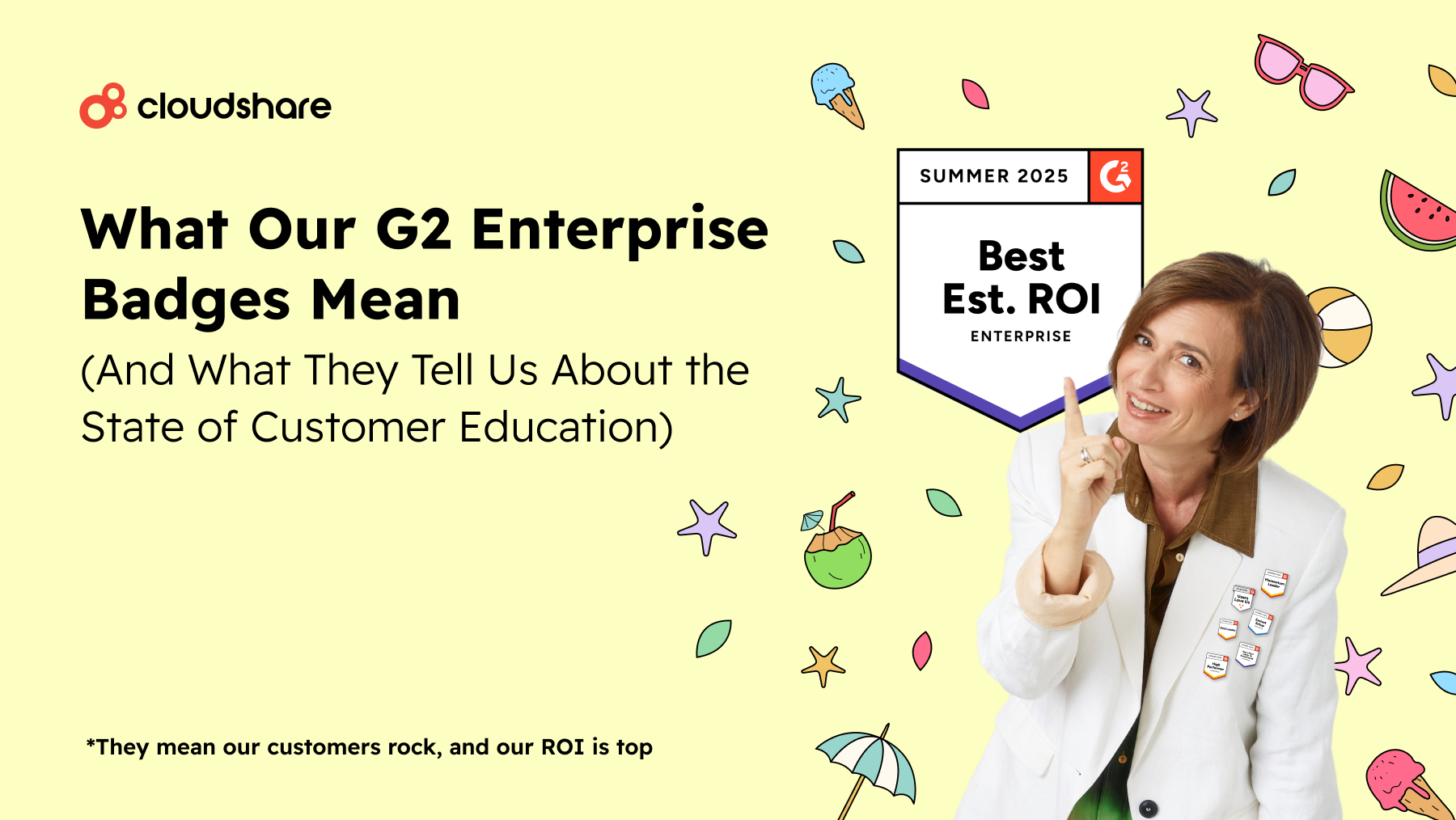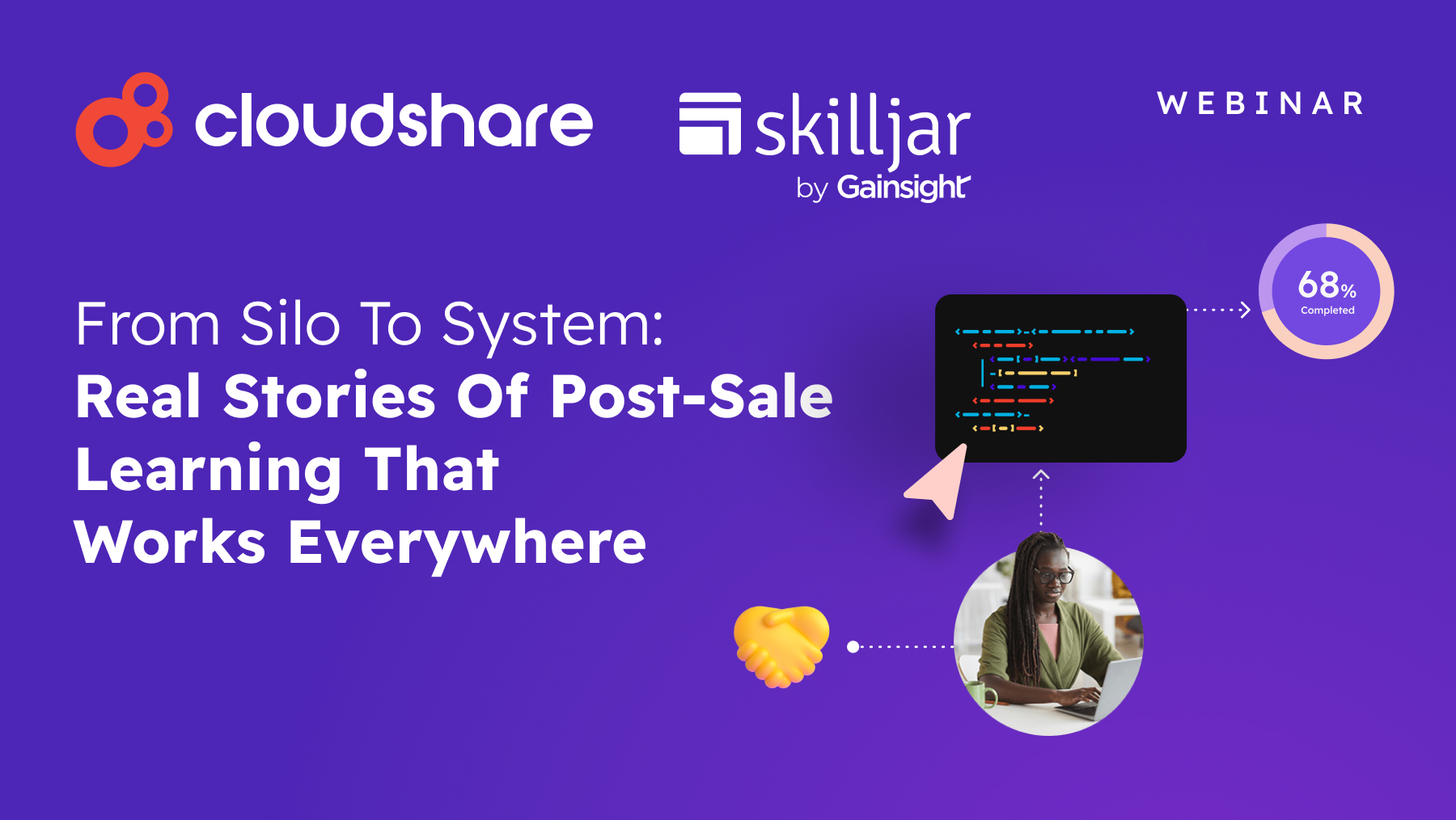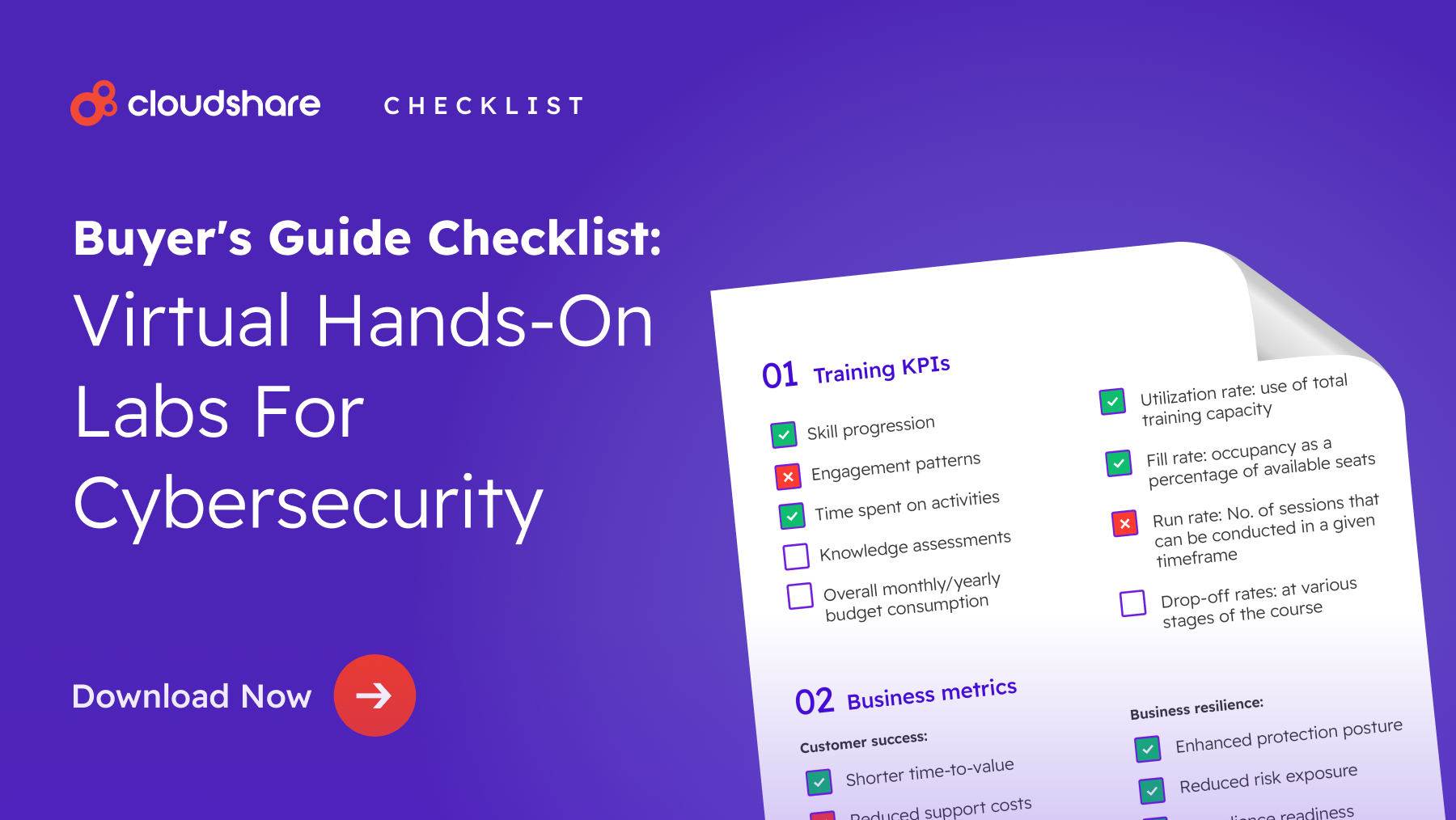
From a business perspective, it’s easy to recognize the importance of customer education. An effective customer training program not only attracts and retains more prospects but can also establish your business as a thought leader. You’ve every reason to embrace customer training — and comparatively few reasons not to.
What’s less easy, however, is figuring out how to create and maintain an effective training program. That’s where we come in. This comprehensive guide walks you through everything you need to know about customer education, from best practices to key metrics and strategies.
But just in case you aren’t already convinced training is important, let’s start with why we wrote this guide.
Why you should already be developing a customer training program
Effective customer education is an essential element of a positive customer experience. Your onboarding process is also the first impression most customers will have with your software outside of product demos and marketing collateral. If that first impression is a poor one, it doesn’t matter how well your software fulfills a customer’s needs.
Most people will give up before they reach the product adoption stage, often quitting before your team has even finalized a sale.
According to a Wyzowl survey, more than 90% of customers feel that companies could do a better job with their onboarding. The survey also found that 80% of people have deleted an application because they didn’t know how to use it – the developer did not effectively onboard them. Finally, more than 60% of customers consider a product’s onboarding process and customer support when making a purchase decision.
To put it another way, poor onboarding can kill your bottom line. On the other hand, a personalized and well-crafted onboarding experience improves satisfaction, engagement, and retention. A high-quality customer training program has benefits beyond revenue as well.
The value of effective customer education
Educated customers are more satisfied and engaged. This means they’re likely to remain loyal to your business, which results in lower churn and higher retention. Additionally, this has the potential to improve how your brand is perceived in the wider marketplace. Even better, well-designed educational content increases the likelihood of someone purchasing from your business by roughly 131%.
Cultivate a positive reputation
When people have a positive experience with a company, they tend to tell their friends and colleagues about it. We’ve also known for quite some time that people consider a business’s reviews and reputation when making a purchase, so much so that a large number of positive reviews could even be considered a competitive advantage.
Reduce strain on support teams
Customer education also reduces the number of tickets directed to your customer success team. Because customers have a deeper understanding of your software, they’re less likely to require assistance with minor configuration and usability roadblocks. Consequently, your support team will have more bandwidth and can dedicate more time and energy to each customer.
Position your company as an industry leader
Expanding your available training content beyond onboarding to industry-specific insights and knowledge can help you position your company as a thought leader. This, in turn, cultivates greater trust in your target audience and makes prospects likelier to consider your software as the answer to their needs.
Provide value to your customers
Finally, educational material goes beyond a basic sales pitch to provide tangible value to your audience. This is arguably the most significant benefit of a customer training program. Most customers, even those in the B2B space, are sick of being sold to.
What do the best customer training programs have in common?
Simply developing a customer education program doesn’t guarantee success. How you do things matters just as much. With that in mind, there are a few characteristics which, in our experience, are shared by the majority of successful customer training programs:
- Training materials and courses are personalized based on each customer’s needs and use cases.
- Customers can choose their delivery method – for instance, they might be able to learn through self-paced training, virtual instructor-led training, or even in-person training.
- The business isn’t afraid to experiment with tactics such as micro-learning and gamification.
- The program is built atop a highly versatile training platform.
- The business’s sales, marketing, training, and customer success teams are aligned with one another, and the training program is aligned with the business’s go-to-market goals.
- Analytics to measure user behavior provide insight into how users engage with the training program beyond basic information like completion rate.
- Rather than attempting to do everything at the outset, the customer education program has been allowed to organically develop and grow alongside the business’s needs.
The different stages of customer education
You cannot establish a successful customer education program overnight. Instead, you must approach your training initiative both deliberately and strategically. This is best achieved by creating and adhering to the customer education maturity model — a gradual, roadmap-based process for developing your customer training strategy.
The model breaks the development of a training program down into simpler, more achievable milestones and stages. Although this roadmap will be unique to both your business and your niche, most models follow the same basic framework.
Starting out
This is where you define your KPIs, create core training materials and secure buy-in from leadership. You’ll also determine the best way to deliver your training, whether that’s in-person, online, or via self-paced learning. Onboarding will likely remain your primary focus throughout this early stage.
Preparing for growth
With the basics established, your next step is to start thinking about how your customer education program might scale beyond the basics, both technologically and culturally.
What other departments within your organization might have a stake in customer training? What can you teach your customers now that they understand how to use your software? Would it be worthwhile to establish certification programs for certain hard skills associated with your solution?
Lastly, what tools can you use to scale up your training both now and in the future?
Adding personalization
The next step is to start thinking about tailoring your training materials to each customer. The simplest approach would be to develop several personas based on the primary use cases for your software and the industries your software targets. You might alternatively consider delivering a unique training program to each new client or else allow customers to chart their own learning paths via a self-paced offering. It’s also important to strike a balance between scalability and personalization to ensure your customer training programs can grow and adapt to changing trends and training needs.
Expand into larger topics
With a fully mature training program now in place, you can begin exploring new tools, technologies, and innovations. This is the stage at which you might go beyond product-focused education and develop content to cement your position as a thought leader. For instance, if your SaaS company focuses on cybersecurity, you could offer a course on how to develop a security awareness training program.
Staying iterative
No training program is truly perfect. There will always be something you can do better, and there will always be opportunities to optimize and expand. Using a combination of customer feedback and training analytics, you can regularly assess and reassess your training.
But you can go beyond training here, as well. You can also use what you learn through your customer education program to improve your products and services. Let’s say, for instance, that you notice multiple customers appear to struggle at the same stage of your onboarding.
That bottleneck may not be due to your training but rather could be linked to a fault or flaw in your SaaS solution’s usability.
How to get customer training right over the long-term
Successful customer training programs take time to develop and grow. For many companies, the hardest part is getting started. Remember, you will learn valuable insights over time that you can use to actively improve your customer training programs.
Having said that, here are a few things to keep in mind to ensure you get started on the right path.
Prioritize your key customer education goals
One of the best ways to boost adoption and retention rates is to ensure your customers receive the training and support they need to get the most value out of your software.
Start by asking simple questions like:
- Do people understand how to use your software?
- Is there any way you can make onboarding simpler and more streamlined?
- How might your onboarding program cause churn and cost you recurring business?
Most importantly, what can you do about it? If you aren’t already asking these questions, it’s time to start. With that said, don’t make the mistake of trying to take on too much at once.
Choose the right customer education metrics and KPIs
If education is the lifeblood of customer success, then analytics is its beating heart. Customer education is and always will be data-driven, built on informed decisions and strategic insights. You can’t just know who your customers are and what they want; you also need to understand what they’re doing and why — which means having some way to measure and monitor your efforts.
Key performance indicators (KPIs) and metrics are often treated as interchangeable, but they aren’t quite the same. Metrics are general measurements of a business’s performance or progress, typically expressed as data gathered over a set timeframe. A KPI, meanwhile, is a ‘big picture’ metric that helps to define strategy and measure progress towards long-term business goals.
The most relevant customer training metrics include:
- Customer Satisfaction (CSAT)
- Net Promoter Score (NPS)
- Churn
- Retention
- Customer Acquisition Cost
- Completion Rate
- Usage Trends
- Usage Data
- Behavioral Patterns
- Time to First Value/Time to Adoption
- Average Revenue Rate
- Referral Rate
- Monthly Recurring Revenue
- Revenue from New Users
Embrace continuous improvement
There is no such thing as true perfection, but that doesn’t mean you shouldn’t continuously strive for it. Always be on the lookout for new opportunities to streamline your onboarding process. For instance, if people tend to stop at the same point when they fail to complete their training, this could indicate the presence of a bottleneck.
Along the same vein, your customer education efforts shouldn’t stop at onboarding. We also recommend maintaining an ongoing customer training program. This will not only allow customers to refresh their understanding of your software but can also be used to introduce new features.
Once you’ve identified your metrics and KPIs, you can apply them here to identify where you can improve over the long-term.
Appoint a customer education leader
One common failing we’ve noticed in larger organizations is that they allow too many people to be involved in strategic initiatives. Instead of keeping their team lean and laser-focused on one core objective, they bring in multiple stakeholders, inevitably bogging down progress. Don’t make the same mistake with your customer training strategy.
Instead, appoint a single champion to helm your efforts, ideally someone knowledgeable and passionate about customer success.
Find ways to shorten the learning curve
While onboarding videos and static walkthroughs can be effective at teaching your customers what to do, you need to start thinking bigger once you’ve laid a foundation. Consider incorporating hands-on training to help customers experience your software while they learn about it. Pair that with features such as tooltips, an onboarding checklist, and a guided walkthrough to help prospects reach activation and adoption as quickly as possible.
Remember that the customer comes first
There are many business benefits to creating a customer education program, including increased sales, improved retention, and fewer helpdesk tickets. Always remember that these objectives are ultimately tangential to the real purpose of customer education. Both your education strategy and your software are ultimately a means to making life easier for your clients.
Whenever you make a decision related to your training program, consider how that decision will impact your customers. If the impact will be negative, go back to the drawing board.
Stay focused and start small
We’ve known for over a decade that multitasking doesn’t exist – and, more importantly, that trying to juggle several tasks at once is a recipe for mediocrity. Instead of completing one task and doing it well, you end up with multiple half-measures. Similarly, if you pursue too many simultaneous objectives when developing your customer education program, you’ll stretch your resources too thin and potentially fail to fulfill any of your targets.
Once you’ve defined the purpose of your training program and tied that goal to your overarching business goals, identify the short-term milestones or objectives you’ll need to achieve in order to get there. List those objectives in order of priority. Reducing time to value during onboarding likely takes precedence over providing your sales team with more upselling or cross-selling opportunities, for instance.
Educate to empower with hands-on training experiences
Developing a killer app is only the first step. You must also teach your customers to use your software. After all, even the best SaaS solution can fail if people don’t understand how it works.
You need to develop customer education materials alongside a strategic, data-driven customer education program. Over the course of this piece, we’ve shown you how to do precisely that. You’re now equipped with the knowledge and tools you need to take the first step towards a more informed, satisfied customer base.
In the meantime, we also recommend checking out our blog post How to Align Customer Training with Company Go-To-Market Goals and our webinar Measuring Success: Create Effective Customer Education Across the Entire Lifecycle. Afterwards, book a free demo and we’ll show you how CloudShare’s virtual training platform helps tie everything together.



![[Webinar On-Demand] Create Effective Customer Education Across the Entire Lifecycle](https://no-cache.hubspot.com/cta/default/20688800/interactive-144316796446.png)


